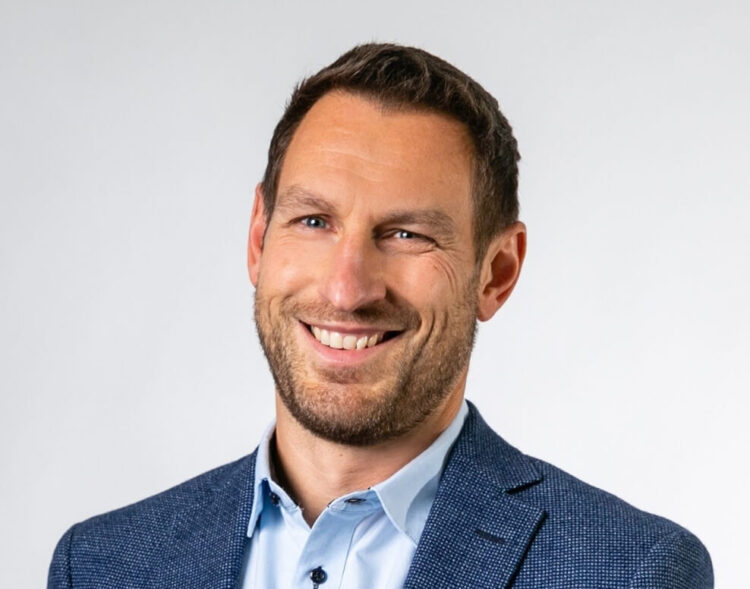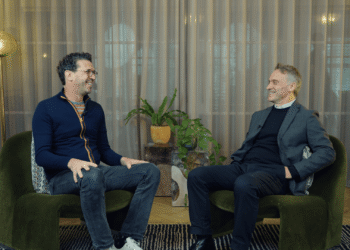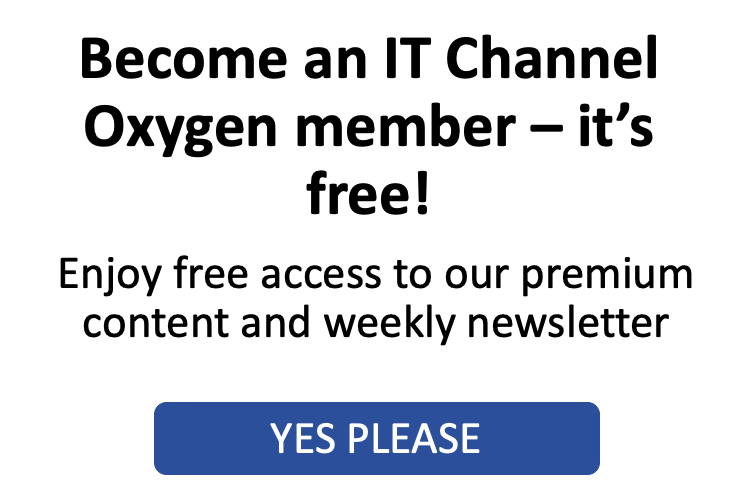Softcat’s share price leapt by more than 12% this morning as it smashed market expectations by delivering double-digit growth for its full year.
In his last media briefing in what must have been an exhausting morning, CEO Graham Charlton ran IT Channel Oxygen through the results, as well as his views on topics such as Microsoft’s big fees change and the rise in return to office mandates….
Hi Graham. Softcat’s top line – gross invoiced income – grew by 4% in your first half, and 18% in your second half. Why the big jump?
[The GII jump] was just about the way the mix played out.
Gross profit is what we’re targeted on, and the way our salespeople think about the world. And gross income then happens to us as a result of the mix that comes with that gross profit.
Our gross profit growth half on half was much more stable – 11% in half one and 13% in half two. That’s much more reflective of how we think of our business, and the actual cadence of what customers are doing.
We did pretty well with some Microsoft and other software licensing in the second half. Some of that Microsoft licensing I think would have been recognised gross, because it was probably into the public sector, or whatever – so it’s just a mix thing.
You grew headcount 14% during the year, but the increase was weighted towards technical and support staff. Can you quantify that, and do you expect it to be similar in your fiscal 2025?
Yes, it will probably be similar again.
But it’s also not dissimilar to what we’ve been doing in the past. Our account manager population has been growing at more like 6-8% and our technical and support staff have been growing at 15-20%. That has been the case, and will continue to be the case.
If we go deeper with those customers over time, they don’t need new account managers. They need support staff and service people, and more capability around them. So as we grow the gross profit per customer, the headcount per customer to support that goes up.
In your results statement, you said your multinational business has continued to grow. How big is this now for Softcat?
We get about 5% of our gross income from fulfilling for customers outside of the UK. That’s going up bit by bit each year.
Again, it’s not the most important focus of our strategy – it is one of the elements. And it is really about supporting customer demand. We are being pulled by our customers into the overseas markets because they like what we’ve done for them in the UK. They want us to do it for them in the US, the Far East, and Europe. So we’re building the capability to do that, and will continue to do.
It’s very hard to predict in five years from now whether that 5% might become 6% or 7%, or it could be 15% if we suddenly accelerate it inorganically as well. All options are open to us and will continue to take the next step along that growth in the next period as well.
Salesforce CEO Mark Benioff recently cheekily dubbed Microsoft Copilot ‘the new Clippy’. How is it being received by your customers?
I’d say very well. Some customers, like we have, have gone all in with it. And when you do that, you really realise the benefits of it.
When you’re just playing around with it with one or two people, it’s different.
Customers need to find the budget, and they need to have their data and processes in place to take advantage of it. As we’ve always said, it will be a slow burn, but it’s a very powerful technology and it’s really only just getting started.
Microsoft have agents for Copilot coming out that will allow customers to build upon a Copilot platform and integrate it with other applications.
Copilot won’t be transformative for all customers overnight, but it will be transformative for how the Microsoft estate works over the years to come.
Amazon has mandated all staff return to office five days a week, and we’re hearing some channel partners are also upping their in-office days to four or even five days. Have you made, or are you planning to make, any changes to your formal office policy?
No. What we’ve tried to do is to be balanced. When the pandemic hit, some people were desperate to come out very quickly and say ‘we’ll never return to office’. Now, people are desperate to say ‘right, now we’re back in five days’. We’ve always tried to find the best of both worlds and navigate between that.
Our culture, which I think is very special, allows us to say to people ‘please put the interests of yourself and the organisation together, and work out the best answer’. Well, we’ve been getting a terrific result from that, and I think you can see that in our results.
We’ll always be thoughtful about that policy and where it is, and we will review it from time to time. But we’ve no plans to suddenly start mandating that people need to be in the office four or five days a week. That might be what the norm develops to. Today, we’re probably at about three days a week. But that’s not because we mandate it. I think our culture is in good shape and the productivity of that policy is in good shape – but we’ll keep an eye on it as well.
Microsoft is known to be making some hefty changes to its incentives for LSP partners like Softcat, cutting fees around Enterprise Agreements from January. What kind of impact will this have on your sales and profits?
The short answer is you don’t really need to do a calculation for Softcat. Because we’re so diverse in our income streams that whatever any one vendor is doing – even Microsoft – it won’t impact our profitability in a material way.
But I think these changes are terrific for a few reasons. One, they signalled it a long time ago, so there should be no surprise about this change. It was a big step, but it was a change and direction they’ve been on for a long time.
It benefits partners who have proven they can cross sell and upsell, and I don’t think there’s anybody who’s proven they’re better at that than Softcat. It also benefits partners with a rich service offering and, again, I think we’ve go the richest service offering in the market.
The changes are a challenge to adapt to, as they always are, but that’s great news for us as I think it gives us an advantage in how we can be dynamic and go with Microsoft on that journey.
You’ve given an optimistic outlook for 2025, forecasting double digit gross profit growth again. Given the pessimism in some quarters – Steve Brazier’s recent Canalys keynote was a bit of a buzzkill – why are you so optimistic?
For a bunch of reasons. I think Softcat has proven that, with the quality and breadth of our offering, we can take marketshare whether the market’s growing at 2% or 8% – and deliver really strong growth as a result. Steve’s good at being provocative, and I don’t think he’s as downbeat as he tried to be to get a reaction from that speech.
I still think the future of the IT channel – the value that we provide in the value chain as capable solutions architects, implementers, managers, resellers of the products that go into the IT estate – has never been greater. It’s more complex than ever, and customers need more advice than ever. So whether it’s a one-year or ten-year horizon, I’m optimistic for the industry, the channel, and especially Softcat’s role within that.
Doug Woodburn is editor of IT Channel Oxygen















